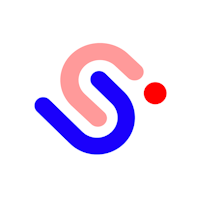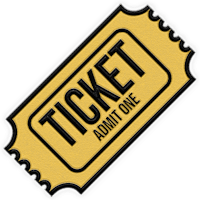This article is related to setting up the Google Analytics integration in the Studio.
For more GA4-specific information, please see the following article:
The Studio makes it really easy to parse web views, clicks, and hovers from a Studio experience directly to your Google Analytics account. This ensures you will get the same standard web page tracking for Studio content as you do for any of your owned properties all in the same GA dashboard.
Note: When embedding Studio content onto your website, you will need to have your GA tag already defined on the parent page, as our integration will be sending events from our iframe to the parent page’s GA instance.
Setting up Google Analytics tracking in the Studio
To set up Google Analytics tracking on your Studio content, follow these steps:
1. In your Google Analytics account, copy your Tracking ID (the tracking ID is the one that starts with UA- followed by a string of numbers).
2. Open your Studio Admin and navigate to Settings > Integration.
3. Under the Integrations tab, toggle the Google Analytics button and paste your Google Analytics ID. For Google Analytics 4, you can add your GA4 Tracking ID into this field, which now supports GA4 ID, which starts with “G-.”

4. Identify your Event Category. The Event Category is used as a top-line grouping of the click/hover events. This value will be sent back to Google Analytics for all click and hover events.
5. Toggle on Track Clicks & Track Hovers and enter your Click Event Action and Hover Event Action values. These values will be sent back to GA to identify your click and hover events.

6. Make sure that when creating your Studio experience, each interaction is on a hotspot that is labeled with a specific name. The names of your hotspots are going to be the event values that populate in GA to identify what is being clicked and hovered over, so it’s very important to have unique names on these.
Once you hit save, your Google Analytics integration will be live and will automatically begin tracking your published Studio content!
What is tracked using the Studio Google Analytics integration?
The main benefit of using the Google Analytics integration is that you will get Studio click and hover data within your GA dashboard.
When a Studio experience is embedded, the GA integration does the job of sending the Studio click and hover events out of the Studio embed to the parent page where the GA tracking on that page picks up the events. All other page-level metrics are tracked as normal by the GA tracking on the page.
In the case of a stand-alone Studio experience, the integration loads
What if I want to use multiple Google Analytics Properties?
In certain situations, you may have different GA Properties for your various business units. If this is the case, you may want to have a different GA Property ID for different Studio experiences. To enable the Google Analytics integration in this way, follow the steps below:
1. In your Google Analytics account, copy the appropriate Tracking ID for your particular experience (the Tracking ID is the one that starts with UA- followed by a string of numbers).
2. Open your Studio Admin and navigate to the specific experience you want to have GA tracking. Select the options menu, and go to Manage > Integrations.

3. Toggle the Google Analytics button and follow steps 3-6 from above.
You will now have Google Analytics data for that particular experience.
Note: You can still set up a single Google Analytics integration at the Account level. This will apply to every experience except for the ones you've applied the experience level integration.
Why is my GA data different from the built-in Studio Analytics?
In very basic terms, all analytics platforms are inherently different in nearly every way, so you should expect to see some variance between what Studio Analytics reports vs. what's reported by GA or any other third-party analytics platform.
The way that Google Analytics calculates data is different than how Studio analytics are calculated. This means you may see slight discrepancies when it comes to page views, average time on page, and bounce rates.
We've outlined a few of the main differences below:
Studio Analytics does not ignore bounces in the same manner as Google Analytics therefore, each Studio experience load counts as an ‘open’ regardless of what the user does on the page.
Because Studio Analytics do not immediately discount bounces, the average time on page and time spent metrics will differ slightly from Google Analytics. Google Analytics will not include users who bounce in their time on page metrics.
Going deeper into "time spent" metrics in particular, Studio analytics is fairly straightforward. For the Studio, it's essentially like a stopwatch - if a visitor is interacting with the page, that time is being counted. If they are not interacting with the page, the time is not counted.
We track the user view time in 5s increments while the user interacts with the page.
Interactions include clicking, scrolling, and video playing. Note that this does NOT include videos with the ‘Loop Forever’ option checked.
If a user has not interacted with the page for 30 seconds, we stop accumulating dwell time for the user. If the user resumes interaction with the page, tracking will resume.
We stop tracking immediately if the page is hidden in a tab or is not the window in focus. Likewise, we resume tracking when the tab or window has focus again.
GA4 calculates Average Engagement Time in a similar way, but there are more factors. It is based on user interactions with your website, including pageviews, events, and other user activities. It measures the total time users spend actively engaging with your site content.
GA4 considers a broader range of user interactions, such as clicks on links, video plays, scroll depth, and more, to calculate engagement time.
In GA4, a session can still be considered engaged even if it includes just one pageview, as long as there are other interactions or events recorded during that session.
If you have any further questions about Google Analytics, we'd recommend referring to documentation from Google, or checking out the Google Analytics Academy.
Also, if you are managing your tags through Google Tag Manager, check out our article on how to set up your Studio Integration with Google Tag Manager.







